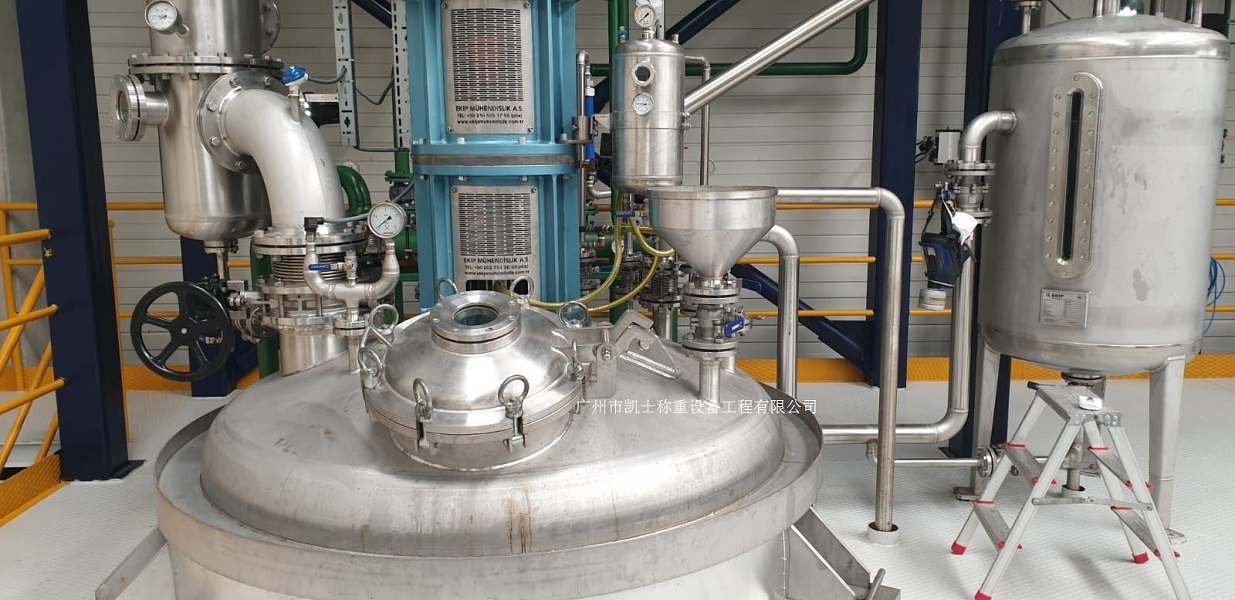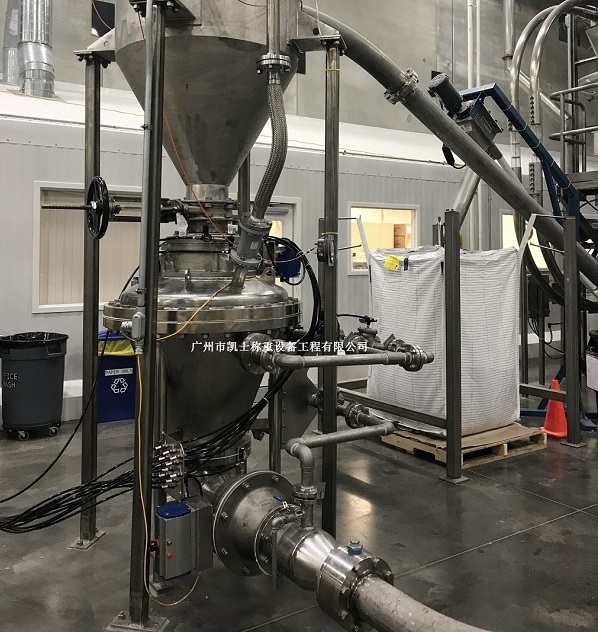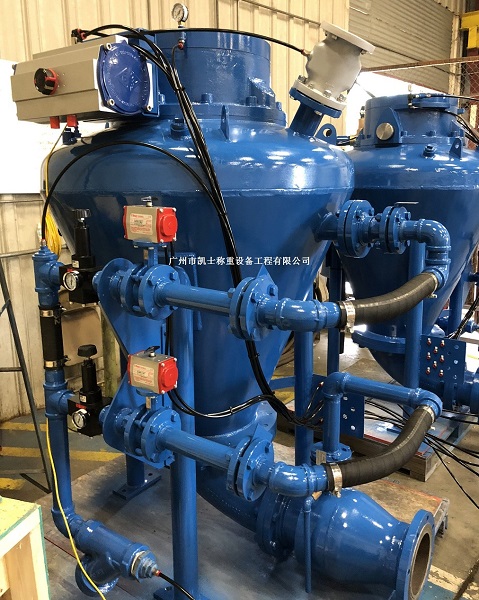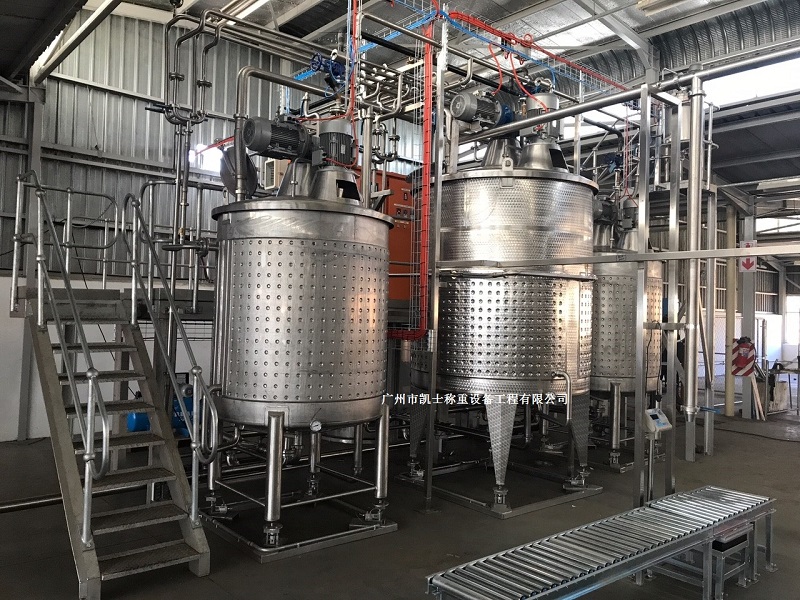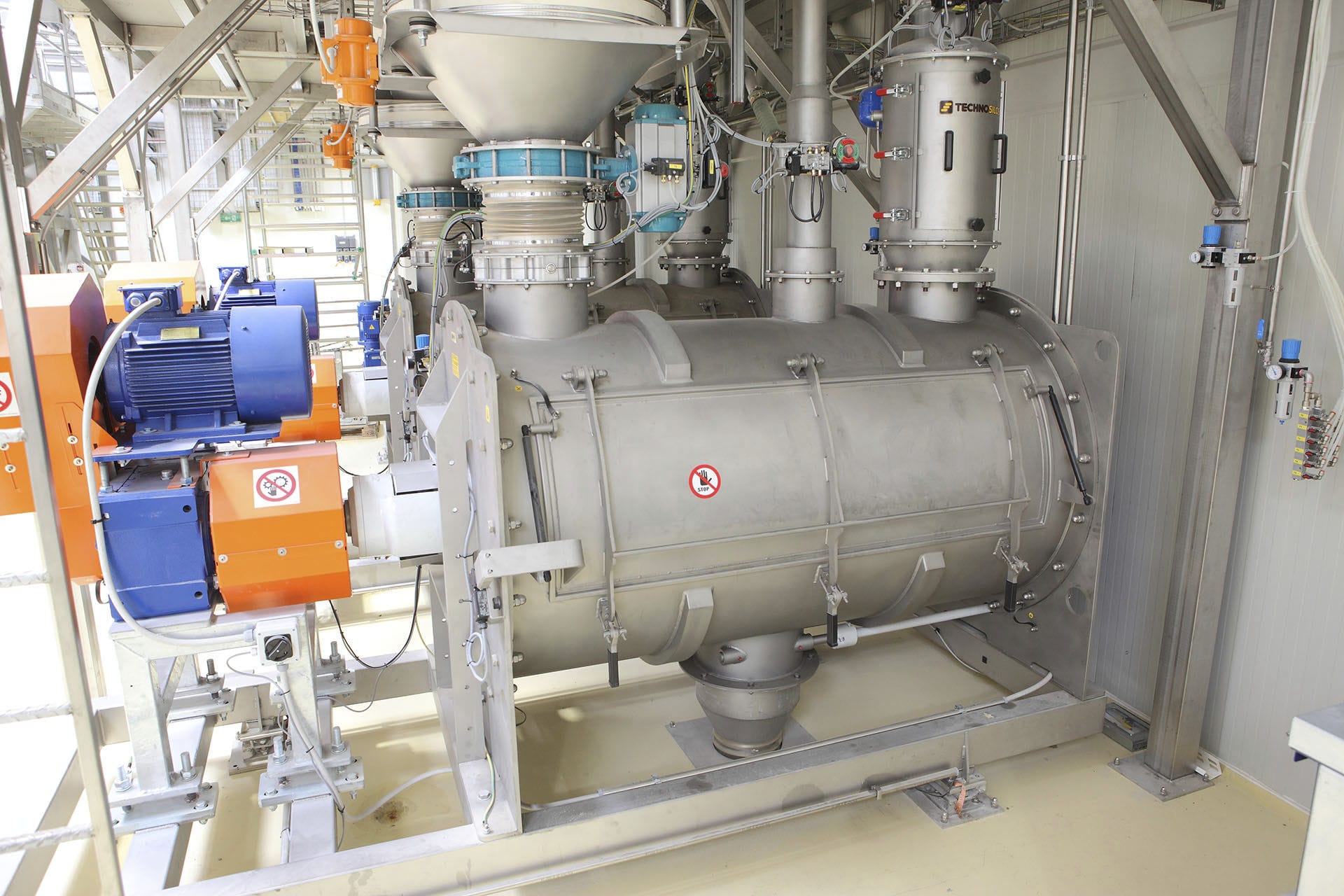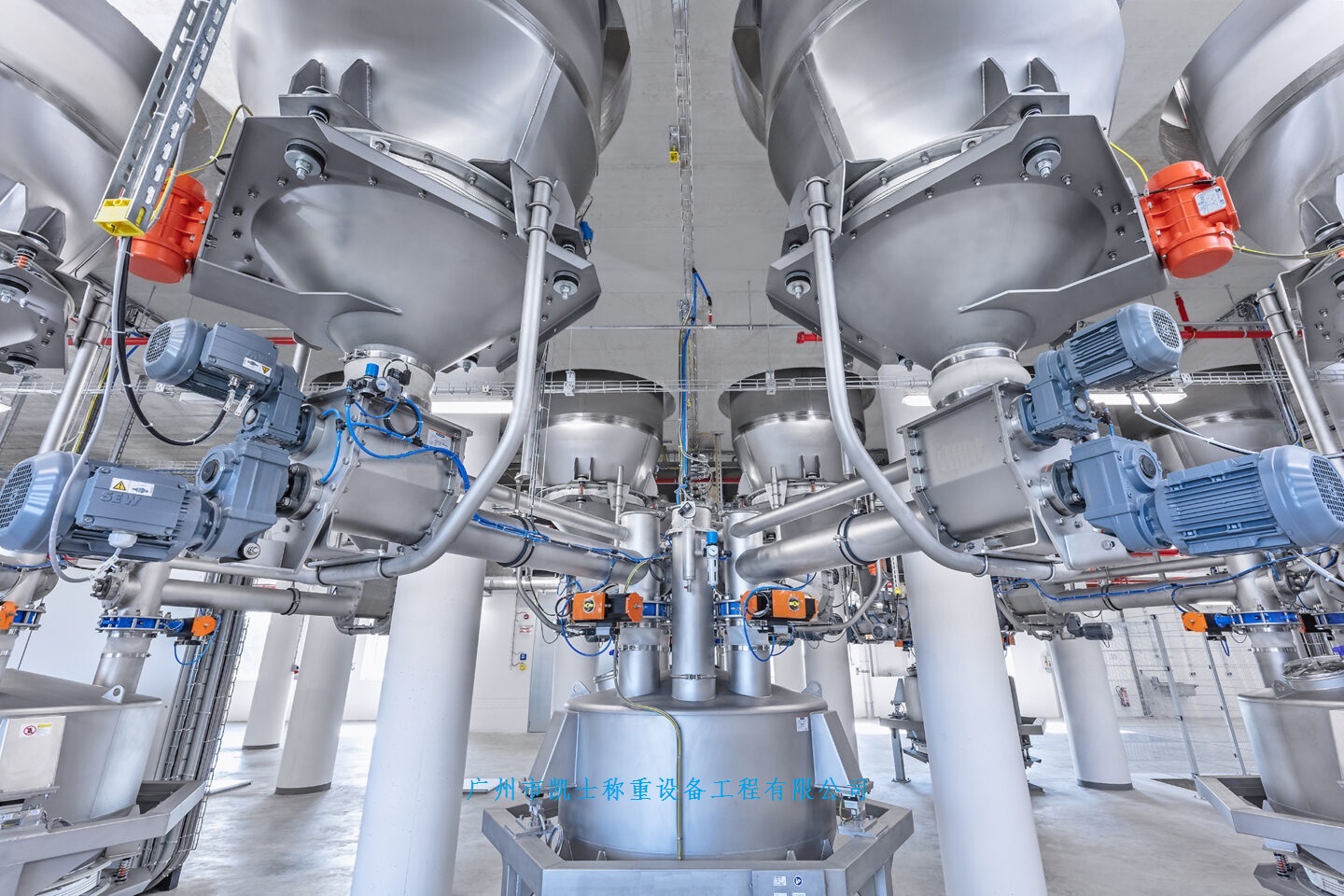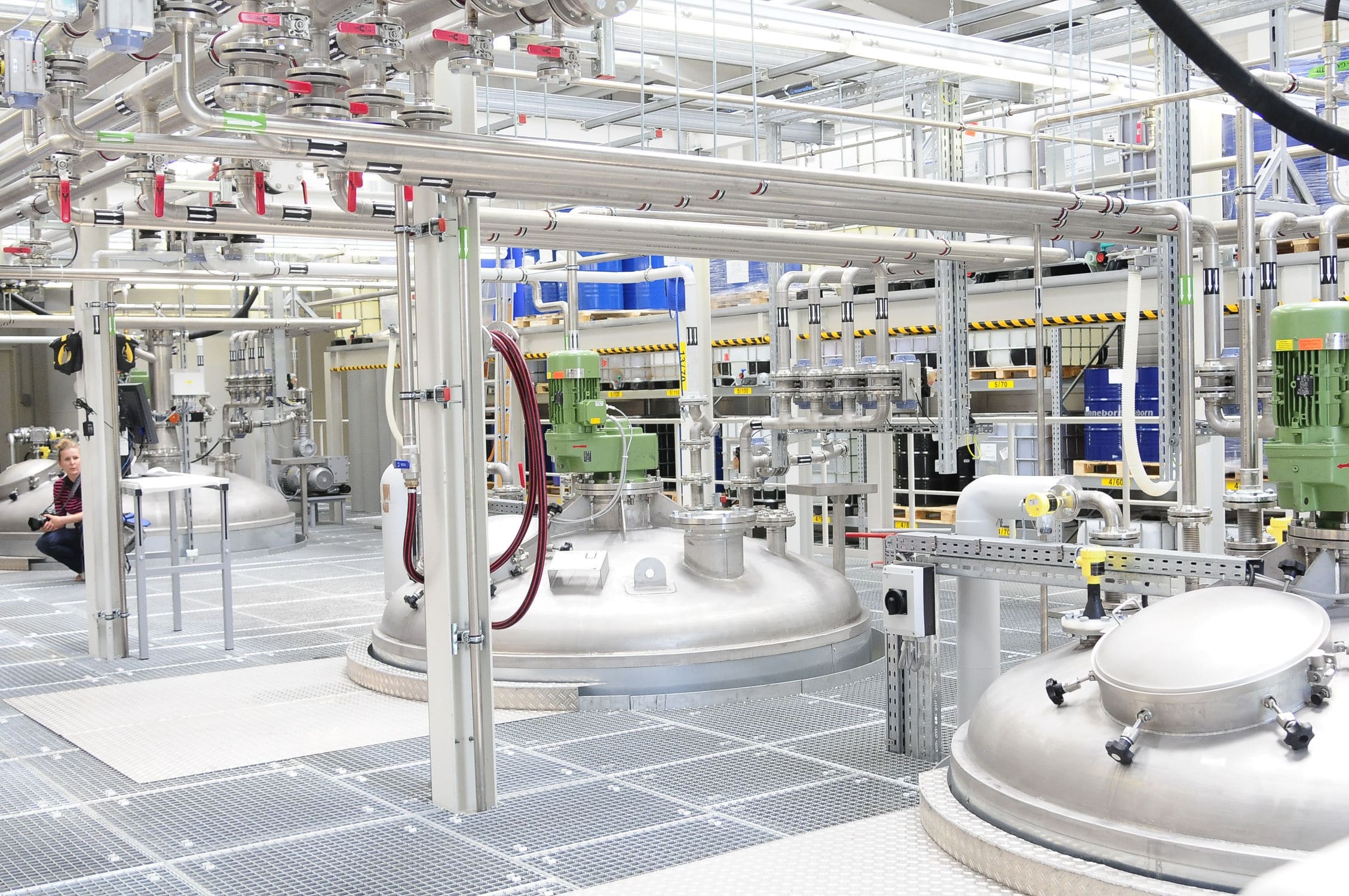

 2020.03.11
2020.03.11Summary:The batching system is divided into fuel crushing, batching, mixing, mixing and screening systems. Weighing instruments are used for simple weighing accumulation and PID adjustment, and the automatic dual control functions of the frequency converter and the host computer are used to control the circle. The feeding amount of the tray feeder.
Blending production is an important part of polyester production, which includes raw material receiving, fuel crushing, dosing, blending, mixing and screening system and other aspects, of which dosing is the key to the entire blending production process. In the past, the automatic dosage system mostly adopts the intelligent weighing instrument to carry out simple weighing accumulation and PID adjustment, which has simple function, low control accuracy, weak management function and low reliability. For this reason, we give the following program.
*Replace the complex control algorithm by a powerful plc, which is done by the secondary weighing instrument or the upper computer, the secondary weighing instrument is only used for the collection of data;
*In the control algorithm, instead of simple PID regulator, FUZZY-PID algorithm based on artificial intelligence is adopted, which makes the control more stable;
*Profibus_DP is used to replace the 485 communication with low communication rate;
2. Overall design
(1) Batching software, hardware configuration, batching is divided into two levels: process monitoring level and basic automation level. Basic automation level:
① 6 sets of disk feeders are controlled by frequency conversion, and the frequency converter adopts Schneider ATV71, which has the dual control function of on-site machine-side manual and upper computer automatic control to control the feeding quantity of the disk feeders.
② 6 sets of disc batching belt conveyor adopts constant speed belt scale with dual functions of on-site manual and upper automatic.
③ 7 sets of direct-dragging belt conveyors adopt speed-regulated belt scales, and the frequency converter adopts Schneider ATV71, with dual functions of on-site manual and upward automatic.
④ Two spiral weighing star feeders are driven by frequency conversion, and the frequency converter adopts Schneider ATV71 products with constant speed of metering spiral.
⑤ Siemens S7-300 series PLC (CPU315-2DP) is used for data acquisition, smooth control and automatic control of feeding system, and the PLC programming software adopts STEP7V5.3.
⑥Weighing and dosage controller is adopted to realize the back-up weighing instrument control function for feeding system.
(7) PLC automatic control and weighing instrument control are optional.
Process monitoring level
The weighing and batching system is equipped with an upper computer as the operation station. The upper computer adopts Taiwan Advantech's industrial control machine IPC, with main frequency not less than P42.4G, 80G hard disk and 512MB memory, which can be used as an engineer's station during system development. The monitoring level has functions of database management and maintenance, dosage optimization calculation and setting, real-time display of system data, over-limit alarm, trend recording and archive printing. The system is equipped with an EPSON printer.
The monitoring software adopts WINCC6.
(2) Batching communication configuration
Adopt two-level communication network
In order to ensure the accuracy of data collection and fast transmission, Profibus-DP is used for communication between weighing controller and PLC.
②Industrial Ethernet is used between PLC and industrial controller.
3. Batching Function
3.1 Process requirements of batching
The main task of the automatic batching system is to calculate, allocate and control the amount of raw material in the tank according to the demand of the material in the mixing machine, so as to ensure the balance of the material and chemical composition in accordance with the requirements. Process requirements for the control system are.
(1) Realize the sequential start-stop, single machine start-stop and simultaneous start-stop of each batching scale and aggregate belt machine.
(2) Realize the weight proportioning control of each dosage scale; (3) Realize the weight proportioning control of each dosage scale; (4) Realize the weight proportioning control of each dosage scale.
(3) Proportioning calculation function
Calculate the flow rate setting value of each scale according to the total amount and the proportion of each scale; (3) Calculate the flow rate setting value of each scale according to the total amount and the proportion of each scale.
(4)Flow rate calculation function
According to the detected weight signal and belt speed signal, calculate the average flow rate of the material in a period of time, and take this average flow rate as the feedback quantity for PID adjustment.
(5) Alarm function
Sound and light alarm for frequently occurring faults such as material blockage, belt slippage, motor overcurrent overload, etc. When material blockage occurs, it is required to automatically start the vibrator motor on the ore chute, and automatically stop vibration after resumption of material discharge.
(6) Backup function
When the PLC system fails, it can quickly switch to the back weighing instrument controller for control.
(7)Report printing function
Manual intervention and timed printing of various reports such as Times, Shift Reports, Monthly Reports, etc.;
(8)Power failure protection function
When power supply is supplied again after power failure, the system will be initialized and reset to ensure that all the equipments are in the state of shutdown, so as to prevent the occurrence of personal accidents and equipment accidents.
3.2 Working principle of dosage
For example, when the system starts to work, the industrial control machine firstly carries out all kinds of initialization according to the production task, including the name of each ingredient of raw materials, bin number, output, standard proportion, and optimally calculates the standard flow rate of each bin, etc. Then the industrial control machine passes the calculated standard flow rate to the plc and the weighing instrument controller. the plc controls the starting of each feeder and belt scale according to a certain sequence, and each feeder feeds the materials according to a certain flow rate. Each feeder feeds the material according to a certain flow rate. The weighing instrument controller calculates the actual flow rate according to the speed signal and weight signal of the belt conveyor collected on site, and passes this signal to the plc and the industrial control machine. The plc calculates the current actual ratio according to the accumulated value of each component, corrects the feeding amount of each feeder by comparing it with the standard ratio, and controls the frequency converter of the belt motor to control the feeding flow rate, so as to make the system work in the optimal proportioning state.
3.3 Speed control strategy
(1) At present, the conventional automatic batching control strategy
The batching weighing instrument accepts the weighing signal and speed measuring signal from the scale body, displays the instantaneous flow rate and cumulative amount after calculation, and sends the instantaneous flow rate in the form of 4~20mA analog current to the PID regulator as the regulating measuring input signal, and the regulator outputs 4~20mA analog regulating signal after comparing and calculating the signal with the set value in the machine, and then controls the speed of the feeding motor to further control the feeding flow rate of the material, and finally makes several materials work in optimal proportioning state. In order to further control the feeding flow rate of the material, the instantaneous feeding flow rate of several kinds of coal materials and the cumulative amount of the stage are kept within the range required by the user. To change the flow rate and proportion can be set directly on the regulator, the operation is simple and convenient.
The process site to which the above solution applies must first meet the prerequisite that the amount of material given must be proportional to the rotational speed of the feed control motor. In order for the system to have good regulation qualities, i.e. high stability, accuracy and rapidity, the dosage system must also have two conditions:
1) The structural nature of the dosage itself is stable, which includes such elements as capacity factor, resistance and transfer distance.
2) The regulator has reasonable PID parameters. Only the intensity of these three roles for appropriate cooperation, can make the regulator fast, smooth and accurate operation, so as to obtain a satisfactory control effect.
In both, condition 1) is the premise of condition 2), because the PID parameters depend on the dynamic characteristics of the system, and the main factor affecting the dynamic characteristics of the system is the nature of the structure of the system itself.
Because in the past the commonly used weighing control system program design is the use of general PID control algorithms, its parameters are generally according to the transition process time of the step response to the rectification of the higher sensitivity, for the fixed-parameter system has a better quality of regulation, theoretically speaking, can be done without error regulation, in the range of error is small does have its superiority. However, in practice, the control accuracy of the electronic belt scale will be affected by a number of factors. Such as: physical properties of materials, mechanical vibration, feeding equipment installation accuracy, silo structure shape and other factors; and the site environment is more complex, harsh, and other external interference is frequent. Due to the presence of the above factors, the dosage error is often larger, its dynamic characteristics are not ideal, the amount of overshooting is generally larger, resulting in the control system can not achieve the desired control effect. At this time, the measurement performance and dosing accuracy of the belt scale will be affected. Fuzzy-PID composite control technology is used here, and fuzzy control technology combined with traditional PID control strategy is applied in the regulation of dosage, which can effectively solve the above problems.
(2) FUZZY-PID control model
The dosage is characterized by an upper computer for monitoring, a set of plc to control multiple feeders, in order to achieve a certain ratio, the work between the feeders and interconnected, and the amount of feeder to be modified with the current actual ratio, so its control structure is more complex.
The dosage belongs to a multi-closed-loop associative control structure. In the case of feed bin no. i, there are two closed loops and one feed-forward, the inner loop is a FUZZY-PID controller, according to the given flow rate Fgi to control the speed-regulated feeder, so that its feed flow rate Fi is controlled in the vicinity of the desired given value Fgi, which is realized by the plc. The outer loop corrects the given value there of the inner loop according to the difference ΔP between the current cumulative value and the desired output as well as the current flow rate of the feeder in the feed-forward link, which is realized by the upper computer.
The controller adopts the FUZZY-PID composite control method, which uses fuzzy control when the deviation is large and PID control when the deviation is reduced to a smaller range. This can solve the control problem of large system error, its dynamic characteristics are not ideal, and the overshooting amount is large.
(3) Design of FUZZY-PID composite controller
The dosage controlled quantity is Fi, and the control quantity is Ui. FUZZY-PID composite control method is used, which adopts fuzzy control when the deviation is large, and adopts PID control method when the deviation is reduced to a smaller range. The two controls are used in parallel and switched by the Bang-Bang switch.
1) Bang-Bang changeover switch
The Bang-Bang switch is actually a software switch in the controller that determines which control algorithm is used. Set e1 that the size of the deviation of the cut-off value, the switching law is as follows: when /Ei / <= e1, Kp = "1", Kf = "0", that is, the use of PID control law; when /Ei 〉e1, Kp = "0", Kf = "1", that is, the use of fuzzy control law.
(2) PID controller
PID controller using a general incremental digital algorithm, its parameters are adjusted according to the norm. Ideal analog PID control algorithm is shown in the formula, where, p: regulator output, e: regulator deviation input signal, Kp: proportionality coefficient, commonly used proportional band P that P = 1/Kp, Ti: integration time, Ti is bigger, the weaker the integral role, the longer the integration time, Td: differentiation time.
3) Fuzzy control principle and fuzzy controller realization
Fuzzy control through fuzzy logic and approximate reasoning methods, the human experience formalized, modeled into a computer can accept the control model, so that the computer instead of people to carry out effective real-time control, in order to achieve fuzzy control, the computer as a fuzzy controller, must solve the following three problems:
a Fuzzy quantization of input quantities output quantities;
b the establishment of fuzzy control rules, or fuzzy control rule table;
c fuzzy judgment of the output information.
The ingredients are the principle of fuzzy control:
S: the set value of the system, which is the exact quantity.
e, c: system deviation and deviation change rate, both exact quantities.
E, C: deviation and deviation change rate become fuzzy quantities after fuzzy quantization.


















